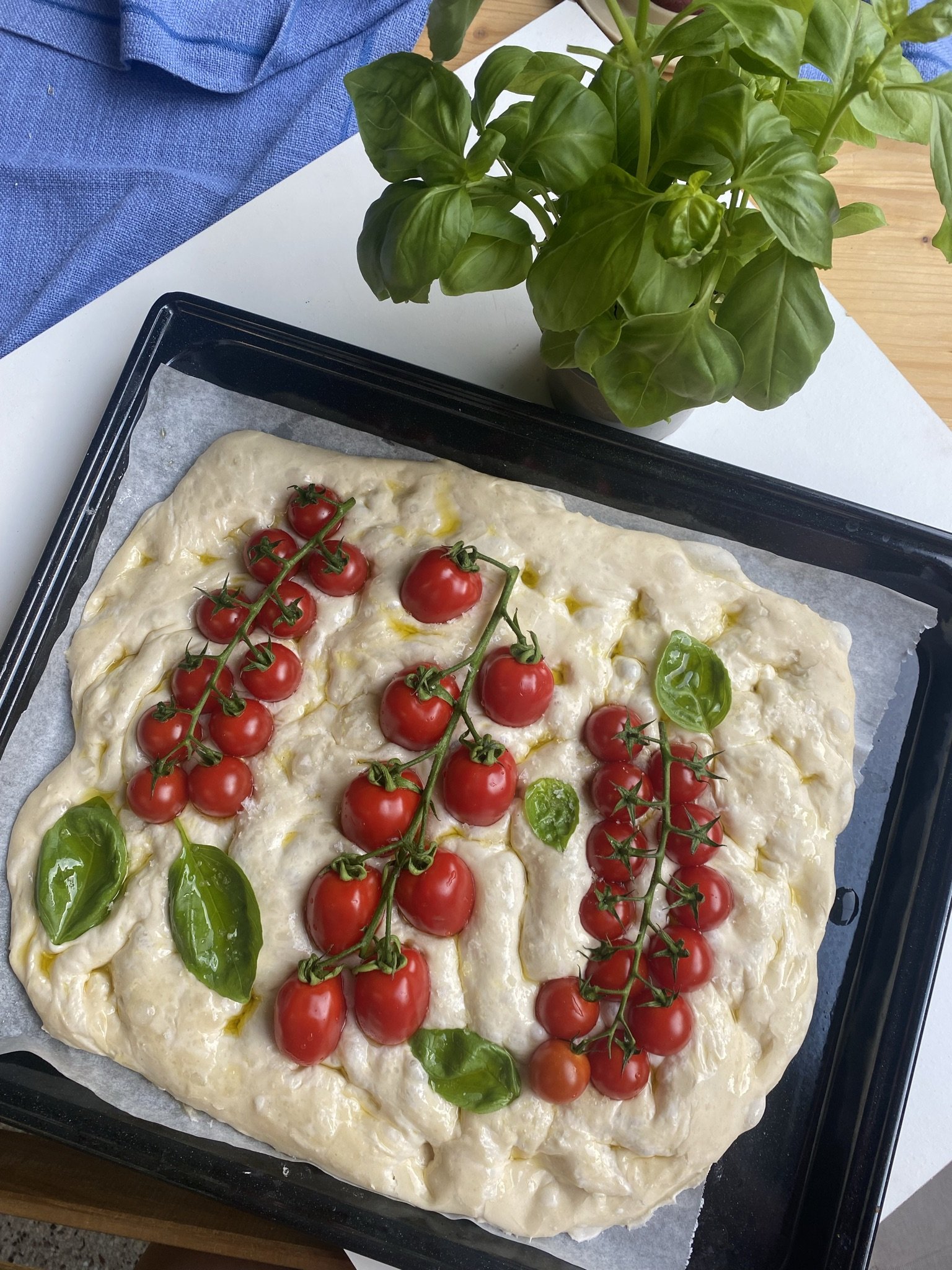Sourdough focaccia
One of the first things I prepared when I embarked on my sourdough journey is focaccia. It doesn’t have to rise as much as bread, so it leaves much more room for error in handling your starter, making it the perfect beginner’s recipe.
It’s delicious and makes for the perfect aperitivo, snack or even meal (just eat it with some mozzarella and tomatoes on top).
Here are some things to keep in mind:
Flour: you want to pick a flour that has a high content in proteins (and so, gluten). This will make your dough more flexible and absorbe more water. You can see the protein content of the flour on the side of your package: it should be higher than 10%, ideally 12%, so what in baker’s lingo is called a strong flour.
Timing: baking with a sourdough starter requires much longer times than with commercial yeast. You’ll need to keep into account resting and proofing times.
This is how I plan around making my focaccia: at night i feed my starter and leave it out of the fridge. In the morning I prep my levain (see here how) and mix the ingredients early in the afternoon as soon as it’s doubled. Bulking happens in the afternoon, after which you can either proof it overnight in the fridge or on your counter for 3 hours.
Ingredients
Serves: one oven tray sized focaccia, makes an aperitivo for 8 or dinner for 4Prep time: 20 minsRest / proofing: 6 to 16 hoursCook: 30 mins100g levain
500g strong white bread flour
400g tepid water
15g fine salt
10g salt crystals / fleur de sel
20g olive oil
Preparation
Your levain must be ready and bubbly. You can perform the float test if you’re unsure: drop a spoonful into hot water, it the starter floats then it’s ready to be used.
Add the levain and the water and stir with a spatula. It doesn’t have to be perfectly mixed, it’s fine if some starter is still floating around in chunks. Add the flour and mix the dough with the spatula until you obtain a rough dough: it doesn’t have to be smooth but the flour should all be mixed in without any dry bits left. Cover and let it rest for 30 min to 1h.
Scatter the salt over the dough and, with wet fingers, turn the dough in the bowl while you lift, stretch and fold the dough until it’s all mixed in, cover and let it rest 30 mins.
Next you’ll have to grab the dough and stretch it over itself, and repeat on the other side of the dough. Let it rest another 30 min and repeat the process two more times then leave the dough to prove.
Proofing time can either last 2-3 hours (you’re looking for the dough to rise by about 40%), or 10-12 hours based on when you’re looking to bake the focaccia.
Prepare a baking tray and drizzle it with olive oil. Make sure the whole surface is covered in it before scraping the dough onto it. Stretch the dough with your fingers as best as you can and let it prove in the oven. After 30 min stretch it further until it’s covering the whole surface. Leave to prove another 30 min while you preheat the oven to 250*C.
Scatter the surface with olive oil then dimple the surface with your fingertips, then drizzle it with flakey salt.
Cook on the lower level of the oven for roughly 30 min, until deep golden. Let it cool for at least 30 min before cutting it into squares and serving.




